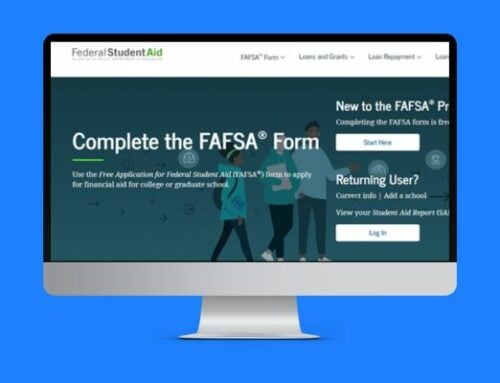529 College Savings Plans: A Primer
Are you looking for a way to save for your children’s college education? A 529 College Savings Plan is a great way to start. A 529 plan is a tax-advantaged savings plan designed to encourage saving for future college costs. 529 plans, legally known as “qualified tuition plans,” are sponsored by states, state agencies, or educational institutions and are authorized by Section 529 of the Internal Revenue Code. Here’s a primer on 529 College Savings Plans to help you get started.
Two Types of 529 Plans
College Savings Plan – The college savings plan works much like a Roth IRA, Roth 401(K), or Roth TSP. This is what most people think of when they discuss 529 plans. State and financial institutions typically administer these accounts. Contributions are after-tax dollars and grow tax-free. 529 plans typically have several investment options from which you can choose. Most states offer a plan, but you don’t have to pick the one within your state. The Saving For College website reviews the plans on a regular basis. You can see their assessment here (LINK).
Pre-paid Tuition Plan – The pre-paid tuition plan allows you to pay some or all of your child’s `future education at cost at today’s prices. Each state administers its pre-paid plan. Tuition is for in-state, public schools. Although there is a separate Private College 529 that has about 250 private schools in it.
Qualifying 529 Uses
The funds in a 529 plan can be used for qualified higher education expenses, such as tuition, fees, books, supplies, and room and board. Qualified expenses must be incurred at an, which can include colleges, universities, vocational schools, and certain other postsecondary educational institutions.
529 plans can be used to pay for a wide range of higher education expenses, including tuition, fees, room and board, books, and supplies. The funds can be used at eligible educational institutions like colleges, universities, vocational schools, and even qualified apprenticeship opportunities. Additionally, the Tax Cuts and Jobs Acts authorized up to $10,000 per year for K-12 education.
State Tax Deductions
Many states offer tax deductions or credits for contributions made to a 529 plan. These deductions can vary from state to state, so it’s important to check with your state’s tax laws to see what deductions are available.
Maximum Contributions
There is no annual limit on the amount that can be contributed to a 529 plan, but there is a lifetime limit on the amount that can be contributed. The amount varies state by state. Missouri currently allows the largest lifetime contribution of $550,000. Mississippi and Georgia have the lowest at $235,000. You can see a full state listing here (LINK).
One tax note: Contributions to 529 plans are considered gifts to the named beneficiaries. The annual gift exclusion limit for 2023 is $17,000. 529 plans have a special provision allowing for up to 5 years of gifts (currently $85,000) to be made as a lump sum. As long as no other gifts are given to the beneficiary over the next 5 years, gift tax filing is not required.
What Happens if your child doesn’t go to college?
If your child decides not to go to college, the funds in the 529 plan can be transferred to another beneficiary, such as a sibling or grandchild. There may be tax implications for this so do your research before making any changes. The funds can also be withdrawn, but you will have to pay taxes and 10% penalty on the earnings portion of the withdrawal. Additionally, starting in 2024 you can roll 529 funds to a Roth IRA. This has a maximum lifetime cap of $30,000.
What Happens if your child gets a scholarship or attends a military academy?
If your child gets scholarships to defray the cost of college 529 funds can also be withdrawn. You will have to pay taxes on the earnings but will not be subjected to the 10% penalty.
Conclusion
A 529 College Savings Plan is a great way to save for your child’s college education. It offers tax advantages and the flexibility to transfer the funds to another beneficiary or withdraw them if your child decides not to go to college. It’s important to check with your state’s 529 plan to determine if there are any tax benefits available and to find out the contribution limit.
Top Ten Key Takeaways
- A 529 College Savings Plan is a tax-advantaged savings plan designed to encourage saving for future college costs.
- There are two types of 529 plans: prepaid tuition plans and college savings plans.
- Funds in a 529 plan can be used for qualified higher education expenses. This includes tuition, fees, books, supplies, and room and board.
- Funds can also be used for qualified K-12 expenses up to $10,000 per year.
- Many states offer tax deductions or credits for contributions to a 529 plan.
- Most 529 plans have contribution limits, typically based on the cost of tuition at the most expensive college in the state.
- If your child decides not to go to college, the funds in the 529 plan can be transferred to another beneficiary or withdrawn. You will have to pay a 10% penalty on the earnings portion of the withdrawal. Starting in 2024, it can also be rolled over to a Roth IRA.
- If your child gets scholarships or attends a military academy, you can withdraw up to that amount and not have to pay a 10% penalty. You will need to pay taxes on the earnings.
- 529 plans offer tax advantages and the flexibility to transfer the funds to another beneficiary or withdraw them.
- Starting to save for college as early as possible. This will give your savings more time to grow. Time is a critical factor for whether you will have enough to cover your child’s higher education expenses.




